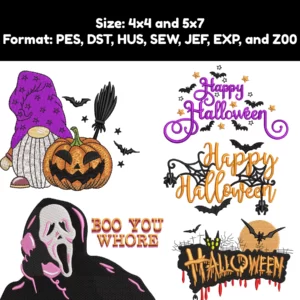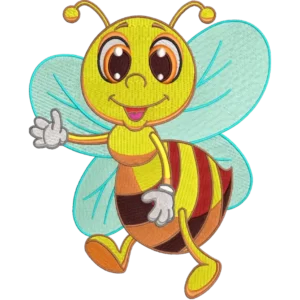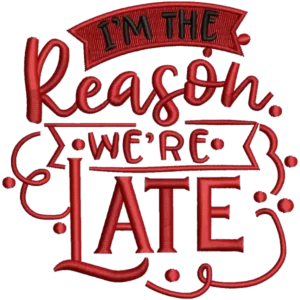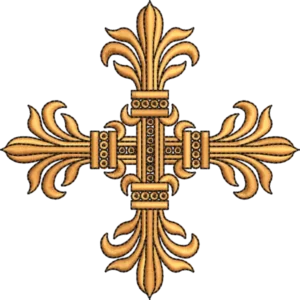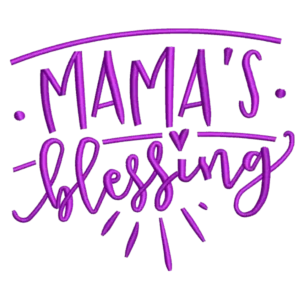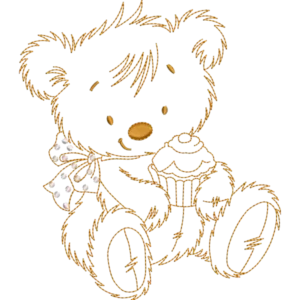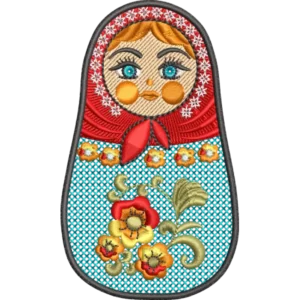Embroidery has long been a cherished art form, adding beauty and intricate designs to various textiles. With technological advancements, machine embroidery has become increasingly popular, allowing for faster and more precise stitching.
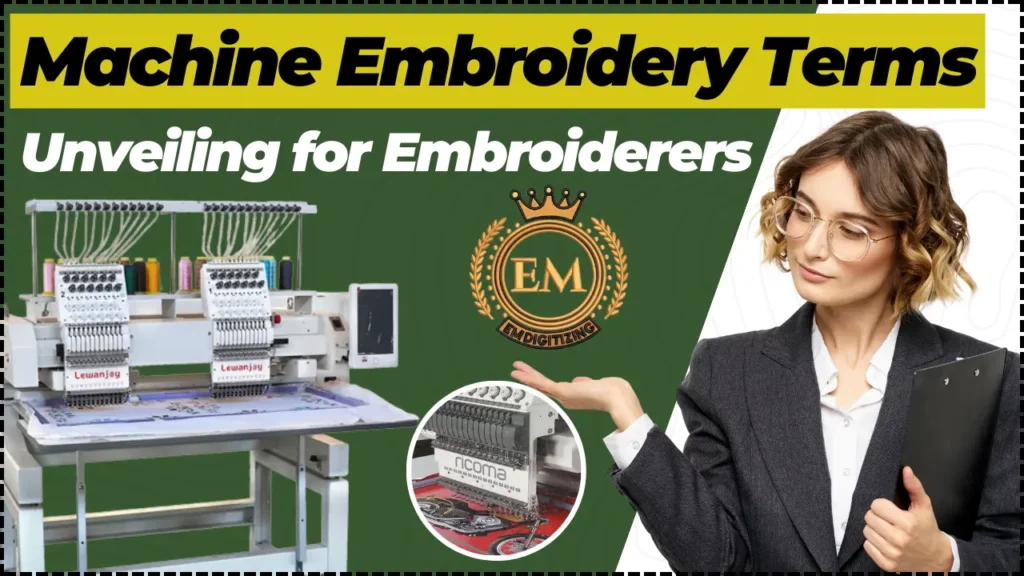
In this article, we will explore the essential terms and definitions that every embroiderer must learn, providing you with a solid foundation to enhance your skills and creativity in the world of machine embroidery.
Machine Embroidery Terms: Unveiling for Embroiderers
Essential Machine Embroidery Tools and Equipment:
There are some essential tools and equipment used in embroidery such as:
Embroidery Machine:
The embroidery machine is the heart and soul of machine embroidery. It’s a sophisticated piece of technology that allows you to bring your creative vision to life.
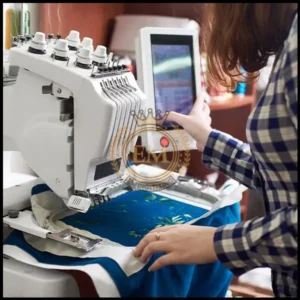
From basic entry-level machines to high-end models with advanced features, there’s an embroidery machine to suit every skill level and budget.
Hoops and Frames:
Hoops and frames are essential tools that hold the fabric taut while the machine stitches the design. They come in various sizes and shapes to accommodate different embroidery projects.
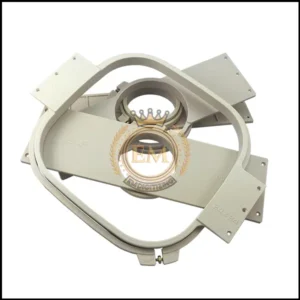
Whether you’re working on a small monogram or a large quilt, having the right hoop or frame ensures that your fabric stays in place, resulting in clean and precise embroidery.
Embroidery Needles:
Embroidery needles are specially designed to handle the demands of machine embroidery. They have a larger eye and a groove along the shaft to prevent thread breakage and ensure smooth stitching.
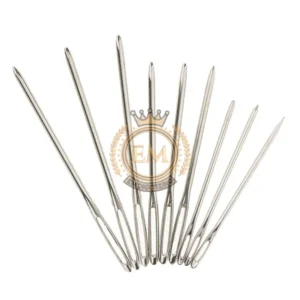
Using the correct needle for your fabric and thread type is crucial for achieving professional-looking results.
Stabilizers and Backings:
Stabilizers and backings provide support and structure to the fabric during embroidery. They prevent puckering, distortion, and stretching, ensuring that your design maintains its shape and detail.
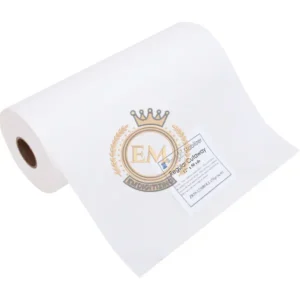
There are different types of stabilizers and backings available, such as tear-away, cut-away, and water-soluble, each suited for different fabrics and embroidery techniques.
Understanding Embroidery Machine Stitches:
Embroidery machines offer a variety of stitch types to create different effects in your designs.
From satin stitches for smooth outlines and fill stitches for solid areas to running stitches for outlines and details, understanding the different stitch types allows you to experiment and achieve the desired look.
Satin Stitch:
The satin stitch is the go-to stitch for creating smooth, dense, and shiny lines in embroidery. It’s perfect for lettering, borders, and detailed designs.
By adjusting the stitch length, density, and tension, you can customize the satin stitch to achieve various effects, from delicate and intricate to bold and eye-catching.
Fill Stitch:
The fill stitch is used to cover large areas with a solid or textured pattern. It can be a simple grid pattern or a complex design, depending on your creativity and the capabilities of your machine.
Fill stitches add depth and dimension to your embroidery, making it visually appealing and capturing attention.
Running Stitch:
The running stitch is the simplest and most basic type of machine embroidery stitch. It’s made up of straight, continuous stitches that create outlines, borders, and finer details.
Although it may seem simple, the running stitch can produce elegant and delicate designs when used creatively.
Trimming and Jump Stitches:
Trimming and jump stitches are terms used to describe different techniques used during machine embroidery to manage thread ends.
Trimming stitches involve cutting excess thread after each color change or at the end of a design. This ensures that the back of the embroidery looks clean and tidy.
Basic Embroidery Techniques and Styles:
There are some basic styles you should know such as:
Appliqué:
Appliqué is a technique where fabric pieces are layered and stitched onto a base fabric to create decorative designs. It allows you to add texture, color, and variety to your embroidery projects.

From whimsical shapes to intricate designs, appliqué opens up a world of possibilities and lets you showcase your artistic flair.
Monogramming:
Monogramming is the art of embroidering initials or a personalized design onto fabric. It adds a touch of sophistication and elegance to various items like towels, garments, and accessories.
Whether you’re monogramming for yourself or as a gift, it’s a classic and timeless way to make your mark.
Free-motion Embroidery:
Free-motion embroidery, also known as thread sketching, allows you to draw with thread using your embroidery machine.
Instead of following a predetermined pattern, you become the artist, moving the fabric beneath the needle to create unique and expressive designs. Free-motion embroidery offers a sense of freedom and creativity that can result in truly one-of-a-kind pieces.
Understanding Embroidery Thread Types:
Embroidery threads come in a variety of types, each with its own characteristics and uses. Here are some common types of embroidery thread you should know:
- Rayon: Rayon threads are known for their vibrant colors and soft sheen. They are popular for creating intricate embroidery designs due to their high tensile strength.
- Polyester: Polyester threads are durable and resistant to fading, making them a popular choice for embroidery projects that require frequent washing or exposure to sunlight.
- Cotton: Cotton threads are versatile and great for both machine and hand embroidery. They have a matte finish and are often chosen for more natural or rustic-looking designs.
- Metallic: Metallic threads add a touch of sparkle and shine to embroidery projects. However, they can be a bit trickier to work with due to their tendency to fray or break.
- Bobbin thread: Bobbin threads are lightweight and used for the underside of the embroidery design. They help keep the back of the embroidery neat and prevent bulkiness.
Experiment with different thread types to see which ones work best for your specific embroidery projects. Don’t be afraid to mix and match for unique effects!
Thread Tension and Weight:
Thread tension and weight directly impact the quality of your machine embroidery. Proper tension ensures that the stitches are even and secure, while thread weight affects the density and appearance of the design.
Thread tension refers to the amount of resistance the upper and lower threads exert on each other. If the tension is too loose, the stitches may be loose or uneven. On the other hand, if the tension is too tight, the fabric can pucker or the thread can break.
Thread weight refers to the thickness of the thread. Thicker threads create more prominent stitches and can add texture to your designs. Thinner threads, on the other hand, are better for intricate details and fine lines.
Finding the right balance between tension and thread weight may require some trial and error. Adjusting the tension and experimenting with different thread weights will help you achieve the desired results in your embroidery projects. Remember, practice makes perfect!
Mastering Machine Embroidery Software and Digitizing:
Machine embroidery software is where the magic happens. Let’s dive into the basics and beyond!
Embroidery Software:
Embroidery software is the brain behind your machine. It allows you to edit, resize, and customize your designs.
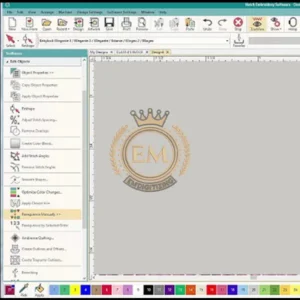
With the right software, you can even create your own designs from scratch. The possibilities are endless!
Embroidery Digitizing:
Embroidery digitizing is the process of converting an image or design into a digitized format that can be stitched by an embroidery machine.
This involves using specialized software to create a digital embroidery design file that the machine can interpret.
Embroidery File Formats:
Embroidery design files come in various formats, including DST, EXP, PES, and more. These files contain the instructions for the embroidery machine to stitch the design accurately.
Different embroidery machines may require specific file formats, so it’s essential to check compatibility before using a design file.
Embroidery Density:
Embroidery density refers to the number of stitches per square inch in an embroidery design. It affects the overall appearance, texture, and stability of the design. Dense embroidery creates more solid and opaque results, while lighter density allows more of the fabric to show through.
Understanding embroidery density is vital for achieving the desired effect in your embroidery projects. It can help you determine the appropriate thread weight, stitch lengths, and even the type of stabilizer needed.
Conclusion:
In conclusion, familiarizing yourself with the key machine embroidery terms and definitions is the first step towards becoming a proficient embroiderer.
By understanding the tools, techniques, stitches, and materials associated with machine embroidery, you will be equipped to bring your creative visions to life with precision and finesse. Whether you are creating personalized gifts, embellishing garments, or exploring artistic expressions, the knowledge gained from this article will undoubtedly enhance your embroidery journey.
So, dive in, explore, and let your imagination soar as you venture further into the captivating world of machine embroidery.
EMdigitizing: The Embroidery Digitizing Expert You Need:
If you need help transforming your awesome designs into embroidery, then you’ve come to the right place!
Let us introduce you to EMdigitizing, the ultimate embroidery digitizing expert!
EMdigitizing is the go-to place for all your embroidery digitizing needs. We specialize in this cool technique and have an amazing deal just for you. If you’re a first-time customer, get ready for a jaw-dropping 50% off on all our services. How awesome is that?
Our team of experts is super skilled in digitizing. What does that mean?
Well, they take your design and carefully transform it into a digital format that’s perfect for embroidery. They work their magic quickly and without breaking the bank. So, you can have your design ready to stitch in no time!
If you have any doubts or questions, don’t worry!
Our team is always here to help you out. Just reach out to us, and we’ll get back to you faster. We’re friendly, helpful, and ready to assist you every step of the way.
If you find this information helpful, why not share it with your friends?
Let them know about EMdigitizing and the amazing services we offer. They’ll thank you for it, and you’ll be the embroidery hero among your pals!
Frequently Asked Questions:
Embroidery is a fascinating craft that comes in different types. The two main types of machine embroidery are free-motion and computerized.
Embroidery involves using different stitches to create beautiful designs. There are six fundamental embroidery stitches that every beginner should know. Running Stitch, Backstitch, Satin Stitch, Stem Stitch, French Knot, Lazy Daisy.
If you’re thinking about getting into machine embroidery, here are the top five embroidery machines in 2023:
- Brother SE600
- Brother SE1900
- Bernette b79
- Janome Memory Craft 14000
- Janome Memory Craft 9850
Embroidery stitches can vary in difficulty, but one stitch that is often considered challenging is the bullion knot. It looks like a complicated coil and requires precision and patience to create.

